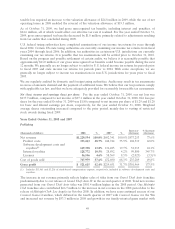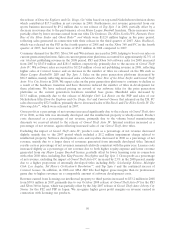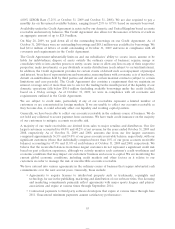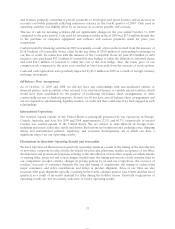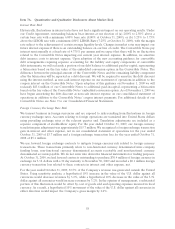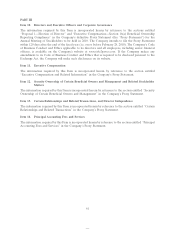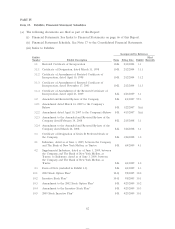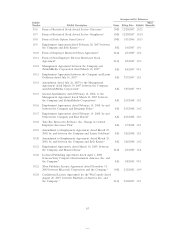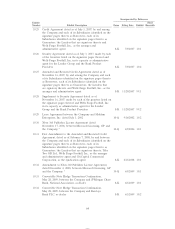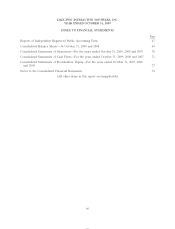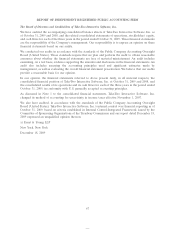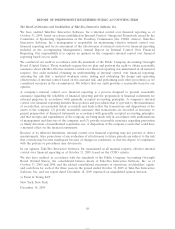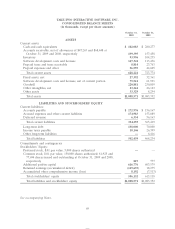2K Sports 2009 Annual Report Download - page 64
Download and view the complete annual report
Please find page 64 of the 2009 2K Sports annual report below. You can navigate through the pages in the report by either clicking on the pages listed below, or by using the keyword search tool below to find specific information within the annual report.Item 8. Financial Statements and Supplementary Data
The financial statements and supplementary data appear in a separate section of this report following
Part IV. We provide details of our valuation and qualifying accounts in ‘‘Note 17—Supplementary
Financial Information’’ to the consolidated financial statements. All schedules have been omitted since the
information required to be submitted has been included on the consolidated financial statements or notes
thereto or has been omitted as not applicable or not required.
Item 9. Changes in and Disagreements with Accountants on Accounting and Financial Disclosure
None
Item 9A. Controls and Procedures
Evaluation of Disclosure Controls and Procedures
Based on an evaluation under the supervision and with the participation of management, our principal
executive officer and principal financial officer have concluded that our disclosure controls and procedures
as defined in rules 13a-15(e) and 15d-15(e) under the Securities Exchange Act of 1934, as amended
(‘‘Exchange Act’’) were effective as of the end of the period covered by this report to ensure that
information required to be disclosed by us in reports that we file or submit under the Exchange Act is
(i) recorded, processed, summarized and reported within the time periods specified in the Securities and
Exchange Commission rules and forms and (ii) accumulated and communicated to our management,
including our principal executive officer and principal financial officer, as appropriate to allow timely
decisions regarding required disclosure.
Inherent Limitations Over Internal Controls
Our internal control over financial reporting is designed to provide reasonable assurance regarding the
reliability of financial reporting and the preparation of financial statements for external purposes in
accordance with generally accepted accounting principles. Our internal control over financial reporting
includes those policies and procedures that:
(i) pertain to the maintenance of records that, in reasonable detail, accurately and fairly reflect the
transactions and dispositions of our assets;
(ii) provide reasonable assurance that transactions are recorded as necessary to permit preparation
of financial statements in accordance with generally accepted accounting principles, and that our
receipts and expenditures are being made only in accordance with authorizations of our
management and directors; and
(iii) provide reasonable assurance regarding prevention or timely detection of unauthorized
acquisition, use, or disposition of our assets that could have a material effect on our financial
statements.
Management, including our principal executive officer and principal financial officer, does not expect that
our internal controls will prevent or detect all errors and all fraud. A control system, no matter how well
designed and operated, can provide only reasonable, not absolute, assurance that the objectives of the
control system are met. Further, the design of a control system must reflect the fact that there are resource
constraints, and the benefits of controls must be considered relative to their costs. Because of the inherent
limitations in all control systems, no evaluation of internal controls can provide absolute assurance that all
control issues and instances of fraud, if any, have been detected. Also, any evaluation of the effectiveness
of controls in future periods is subject to the risk that those internal controls may become inadequate
because of changes in business conditions, or that the degree of compliance with the policies or procedures
may deteriorate.
59


